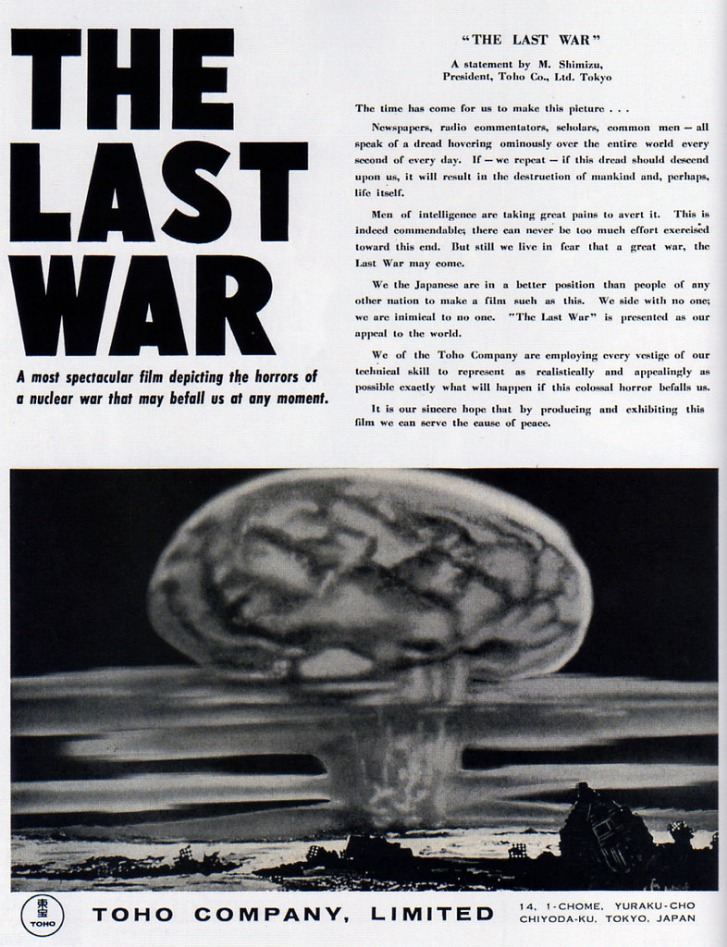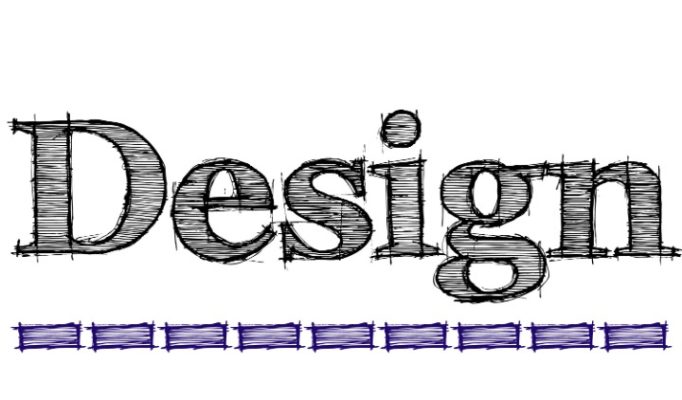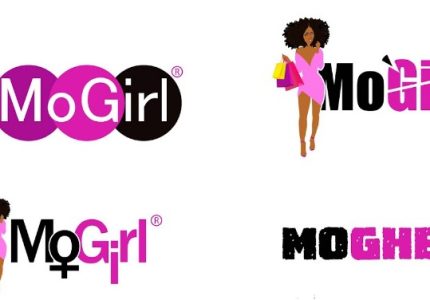Understanding Advertising Graphic Design
Advertising graphic design plays a crucial role in capturing audience attention and conveying brand messages effectively. It combines creativity and strategic communication to develop visually appealing visuals that promote products, services, or brands. Understanding the fundamentals of advertising graphic design helps marketers and designers create impactful campaigns that stand out in a competitive market.
Definition and Importance
Advertising graphic design is the process of creating visual content that effectively promotes products, services, or brands to target audiences. It combines creativity, typography, color theory, and layout principles to communicate a compelling message quickly and clearly. The goal is to attract attention, generate interest, and persuade viewers to take action.
The importance of advertising graphic design lies in its ability to leave a memorable impression and differentiate a brand from its competitors. Well-designed visuals can enhance brand identity, convey professionalism, and evoke emotional responses that motivate consumers. In a competitive marketplace, effective graphic design is essential for capturing attention and driving engagement, making it a critical component of successful advertising strategies.
Role in Modern Marketing
Advertising graphic design plays a crucial role in modern marketing by creating visual content that captures attention, communicates brand messages, and persuades consumers to take action. It combines creativity with strategic thinking to develop compelling visuals that stand out in a crowded marketplace.
- Enhances Brand Identity: Consistent and appealing graphics help establish and reinforce brand recognition.
- Grabs Attention: Bold and eye-catching designs attract potential customers in digital and print media.
- Conveys Messages Effectively: Visual elements can quickly communicate complex ideas and emotions.
- Supports Marketing Campaigns: Complementary graphics strengthen campaign themes and improve engagement.
- Boosts Consumer Engagement: Visually appealing ads encourage interaction and increase conversion rates.
Core Elements of Advertising Graphic Design
Advertising graphic design plays a crucial role in capturing attention and communicating messages effectively. Its core elements include compelling visuals, strategic typography, balanced composition, consistent color schemes, and clear branding. These components work together to create impactful advertisements that resonate with target audiences and drive engagement. Mastering these elements is essential for designing successful advertising materials that stand out in a competitive marketplace.
Color Theory and Usage
Advertising graphic design relies heavily on core elements that ensure effective visual communication. These elements work together to capture attention, convey messages, and influence consumer behavior. Understanding color theory and its application enhances the appeal and clarity of advertisements.
- Typography: The choice of fonts and text arrangement to improve readability and create visual hierarchy.
- Imagery: The use of images, icons, and illustrations to complement the message and evoke emotions.
- Layout and Composition: The organization of visual elements to guide the viewer’s eye and create balance.
- Brand Elements: Logo, slogan, and consistent visual style that reinforce brand identity.
Color theory plays a vital role in advertising graphic design by influencing perception and behavior. Colors can evoke emotions, suggest associations, and stimulate responses from viewers. Proper color usage aligns with campaign goals and target audiences.
- Color Psychology: Understanding how different colors affect mood and perception (e.g., red for excitement, blue for trust).
- Color Harmony: Combining colors that complement each other for aesthetic appeal and visual coherence.
- Contrast: Utilizing contrasting colors to enhance readability and highlight key elements.
- Brand Consistency: Using the brand’s color palette to maintain recognition and loyalty.
Typography and Fonts
Core elements of advertising graphic design play a vital role in capturing attention and communicating messages effectively. Among these elements, typography and fonts are essential components that influence how the audience perceives and engages with the advertisement. Thoughtful selection and application of these elements ensure that the design is not only visually appealing but also clear and impactful.
Some key aspects of typography and fonts in advertising graphic design include:
- Readability: Ensuring the text is easy to read, regardless of size or medium, to effectively convey the message.
- Font Style: Choosing appropriate fonts that align with the brand personality and campaign tone.
- Hierarchy: Using various font sizes, weights, and styles to create a clear hierarchy, guiding viewers through the information.
- Consistency: Maintaining font consistency across different materials to reinforce brand identity.
- Contrast: Employing contrasting fonts or colors to highlight important information and improve visual interest.
- Spacing and Alignment: Using proper spacing and alignment to improve overall legibility and organization.
Imagery and Visuals
Core elements of advertising graphic design, imagery, and visuals are essential components that work together to create compelling and effective advertisements. These elements include color, typography, imagery, layout, and branding that communicate the message clearly and attract the target audience. Imagery and visuals are particularly powerful as they evoke emotions, build brand recognition, and convey complex ideas quickly. The strategic use of images, illustrations, and visual effects helps to capture attention and make the advertisement memorable. Overall, when these elements are thoughtfully combined, they enhance the effectiveness of advertising campaigns and drive consumer engagement.
Layout and Composition
Core elements of advertising graphic design encompass various visual components that work together to create effective and compelling advertisements. These elements are essential in capturing attention, conveying messages, and driving audience engagement.
- Layout: The arrangement of visual and textual elements on a page or screen that guides the viewer’s eye and emphasizes the most important information.
- Composition: The organization and placement of all design elements to achieve balance, focus, and harmony within the advertisement.
- Typography: The art of selecting and arranging fonts to ensure readability, contrast, and to evoke the desired emotional response.
- Color: The use of color schemes to attract attention, create mood, and reinforce branding messages.
- Imagery: The choice of photos, illustrations, and graphics that support the message and appeal visually to the audience.
- Hierarchy: The visual ordering of elements to prioritize the most important information and guide viewers through the ad naturally.
- White Space: The strategic use of empty space to prevent clutter, improve readability, and highlight key elements.
Types of Advertising Graphics
Advertising graphic design encompasses a wide variety of visual elements used to promote products and services effectively. Different types of advertising graphics serve specific purposes, from capturing attention to conveying key messages. These visuals include banners, posters, billboards, social media images, and digital ads, each crafted to engage audiences across diverse platforms. Understanding the various types of advertising graphics is essential for creating compelling marketing campaigns that drive results.
Print Advertisements
In advertising graphic design, various types of print advertisements utilize distinct graphic elements to attract attention and convey messages effectively. These visuals play a crucial role in shaping consumer perceptions and driving sales.
- Banner Ads: Large, eye-catching graphics often used in magazines and newspapers that highlight a product or promotion.
- Magazine Advertisements: Incorporate high-quality images, logos, and slogans to appeal to targeted audiences and convey brand identity.
- Brochures and Flyers: Designed with compelling graphics and layouts to provide detailed information about products or services.
- Posters: Bold visuals and striking typography are used to promote events, products, or campaigns in public spaces.
- Product Packaging: Graphics on packaging serve to attract consumers and communicate the product’s features or benefits.
Digital Banners and Web Graphics
Advertising graphic design encompasses various visual elements used to promote products, services, or brands effectively. It includes different types of graphics created to attract attention and communicate messages clearly across multiple platforms. Understanding these types helps marketers develop impactful campaigns that resonate with their target audience.
- Types of Advertising Graphics
- Logos and Brand Symbols: The visual representation of a company’s identity, helping build brand recognition.
- Print Advertisements Graphics: Artwork used in magazines, newspapers, flyers, and brochures to convey promotional messages.
- Billboard and Outdoor Advertising Graphics: Large-scale visuals designed for public display to maximize visibility.
- Package and Label Graphics: Creative designs on product packaging to attract consumers and communicate product information.
- Social Media Graphics: Engaging images, banners, and infographics tailored for platforms like Facebook, Instagram, and Twitter.
Digital banners and web graphics play a crucial role in online advertising strategies. These visuals are crafted to enhance user engagement and drive traffic to websites or landing pages. Effective digital banners are visually appealing, concise, and optimized for various device screens, ensuring the message reaches a broad audience effectively.
- Digital Banners
- Static Banners: Simple images with concise messages, often used for quick communication.
- Animated Banners: Incorporate movement and transitions to catch viewers’ attention.
- Rich Media Banners: Interactive elements like videos or clickable features to increase engagement.
- Web Graphics
- Header Images: Prominent visuals at the top of web pages that set the tone of the site.
- Infographics: Visual representations of data that simplify complex information.
- Icons and Buttons: Visual cues that guide user interaction and improve navigation.
Social Media Visuals
Advertising graphic design encompasses various visual elements used to attract attention and communicate messages effectively across different platforms. Social media visuals are a key component, crafted to engage audiences in dynamic digital environments.
- Photographic Graphics: High-quality images that showcase products or evoke emotions, often combined with text overlays for promotional messages.
- Illustrations: Hand-drawn or digitally created artwork used to add a creative and unique touch to advertisements.
- Infographics: Visual representations of data or information that make complex details easy to understand quickly.
- Typography-based Graphics: Designs that emphasize text with distinctive fonts and styling to convey brand identity or slogans.
- Animations and Motion Graphics: Moving visuals used in social media stories or videos to capture attention and enhance storytelling.
- User-Generated Content: Visuals created by consumers sharing their experiences, which can be repurposed for advertising.
- Memes and Viral Graphics: Humorous or trending visuals designed to increase shareability and brand visibility.
- Branded Templates: Consistent visual formats for posts that reinforce brand recognition across social platforms.
Billboards and Outdoor Advertising
Advertising graphic design plays a crucial role in capturing attention and conveying messages effectively through various visual formats. Different types of advertising graphics are utilized to maximize visibility and impact across diverse platforms.
- Billboards: Large-scale outdoor advertisements placed in high-traffic areas to reach a broad audience instantly. They often feature bold images and concise text to leave a lasting impression.
- Pole Signs: Vertical signs mounted on poles, typically found near highways or busy intersections, designed to advertise local businesses or events.

- Effective outdoor advertising relies on striking visuals, simple messaging, and strategic placement to ensure maximum exposure.
- Designers tailor graphics to fit the specific dimensions and context of each advertising medium, enhancing visual appeal and clarity.
- Creative use of color, contrast, and typography is essential in outdoor advertising to differentiate from competitors and capture viewer attention quickly.
Design Process in Advertising
The design process in advertising graphic design is a crucial journey that transforms creative ideas into impactful visual messages. It involves a series of strategic steps, including research, conceptualization, and execution, to ensure that advertisements effectively communicate the desired message to the target audience. Through careful planning and artistic insight, designers craft visuals that capture attention, influence perceptions, and drive consumer engagement.
Research and Briefing
The design process in advertising graphic design begins with thorough research and clear briefing to understand the target audience, market trends, and client objectives. This initial stage involves gathering relevant data, analyzing competitors, and identifying unique selling propositions to inform creative development. Once the research is complete, the brief serves as a foundational document that outlines the project goals, key messages, brand guidelines, and desired outcomes. A well-crafted brief ensures that all team members are aligned and provides direction for the conceptual phase. From there, designers translate insights into visual concepts, balancing creativity with strategic objectives to produce compelling advertising graphics that resonate with viewers and effectively communicate the intended message.
Concept Development
The design process in advertising, particularly in graphic design, begins with understanding the client’s objectives and target audience. It involves researching market trends and competitors to identify unique selling points. Concept development is a crucial stage where ideas are brainstormed and refined to create compelling visuals. During this phase, designers explore various themes, color schemes, and layouts to communicate the core message effectively. Sketching and prototypes are often used to visualize concepts before finalizing the design. The goal of concept development is to produce innovative and memorable visuals that resonate with viewers and elevate the brand’s presence in the marketplace.
Design Creation
The design process in advertising graphic design begins with understanding the core message and target audience, ensuring the creative direction aligns with campaign objectives. It involves research, brainstorming ideas, and developing initial concepts that communicate the brand’s identity effectively. Through iterative development, designers refine visuals, typography, and layout to create compelling visuals that capture attention and convey the desired message succinctly. Collaboration and feedback are integral during this phase, enabling adjustments that enhance clarity and impact. Ultimately, a well-executed design creation balances creativity with strategic intent, producing advertisements that resonate and drive engagement.
Review and Revisions
The review and revision stage in the advertising design process is crucial for refining concepts and ensuring the final product aligns with the client’s goals and expectations. This phase allows designers to gather feedback, identify areas for improvement, and make necessary adjustments to enhance visual impact and message clarity. Effective communication between designers and clients during this stage helps to clarify objectives, address concerns, and incorporate suggestions that strengthen the overall campaign. Multiple rounds of review and revision often lead to a more polished and impactful advertising graphic that effectively resonates with the target audience.
Final Delivery
The design process in advertising graphic design involves a series of strategic steps to develop compelling visual content that effectively communicates a brand’s message. It begins with understanding the client’s objectives, target audience, and key messages, followed by research and ideation to generate creative concepts. Sketches, mood boards, and layout drafts are then developed to visualize the ideas before moving into digital refinement and production. Throughout the process, collaboration and feedback are crucial to ensure the design aligns with the brand identity and campaign goals.
Final delivery in advertising graphic design marks the culmination of the creative process, where the polished designs are prepared for distribution across various media platforms. This phase includes optimizing files for print or digital use, adhering to technical specifications, and ensuring high-quality output. Delivery formats are tailored to meet the requirements of newspapers, magazines, billboards, social media, or websites. Successful final delivery guarantees that the visual message maintains its integrity and impact, effectively reaching and engaging the intended audience.
Tools and Software Used
In the realm of advertising graphic design, a variety of tools and software are essential for creating compelling visuals that capture attention and convey messages effectively. These tools enable designers to transform creative concepts into professional-quality graphics, ensuring that campaigns stand out in a competitive market. From initial ideas to final touches, the right software plays a crucial role in achieving impactful advertising visuals.
Adobe Photoshop
Adobe Photoshop is a vital tool in advertising graphic design, offering a wide range of features for creating visually compelling and professional-quality graphics. Its powerful editing capabilities enable designers to manipulate images, apply effects, and adjust colors with precision, ensuring that each advertisement stands out. Photoshop’s extensive selection of brushes, filters, and layer styles allows for creative flexibility and detailed customization, essential for capturing the target audience’s attention. Additionally, its compatibility with other Adobe Creative Cloud applications streamlines the workflow, making it an industry-standard software for producing high-impact advertising visuals.
Adobe Illustrator
Adobe Illustrator is a fundamental tool in advertising graphic design, offering unparalleled capabilities for creating detailed and scalable vector graphics. Its versatile features enable designers to craft eye-catching logos, icons, and promotional materials with precision and creativity. Illustrator’s extensive color management, typography options, and layout tools allow for the development of cohesive and visually appealing advertising campaigns. Additionally, its compatibility with other Adobe Creative Cloud applications streamlines the workflow, making it an essential software for professionals aiming to produce high-quality, impactful marketing visuals.
Canva
Canva is a popular tool widely used in advertising graphic design for creating visually appealing and professional content efficiently. It offers a user-friendly interface that allows designers of all skill levels to produce high-quality graphics suitable for various advertising platforms.
- Intuitive drag-and-drop editor
- Extensive library of templates, images, and icons
- Customizable text and font options
- Collaboration features for team projects
- Export options suitable for social media, print, and digital advertising
- Affordable subscription plans and free version available
Other Design Platforms
In advertising graphic design, a variety of tools and software are employed to create compelling visuals that capture audience attention. Popular design software includes Adobe Photoshop for image editing, Adobe Illustrator for vector graphics, and Adobe InDesign for layout design. Many designers also utilize Canva and Figma for quick prototyping and collaborative projects. Additionally, tools like CorelDRAW and Affinity Designer are favored for specific design tasks. Besides traditional software, other design platforms such as Crello and Pixlr offer online alternatives that are accessible and user-friendly, enabling creative professionals to produce high-quality advertisements efficiently.
Trends in Advertising Graphic Design
Advertising graphic design is a dynamic field continuously evolving to capture audience attention and convey brand messages effectively. As technology advances and consumer preferences shift, designers are exploring innovative styles, bold visuals, and digital integrations to stay relevant. Understanding current trends in this domain is essential for creating impactful campaigns that resonate in today’s competitive market.
Minimalism and Simplicity
Trends in advertising graphic design continually evolve to capture audience attention and convey brand messages effectively. Currently, minimalism and simplicity are dominating the industry, emphasizing clean lines, ample white space, and straightforward visuals. This approach helps brands communicate their core ideas quickly and clearly, reducing visual clutter and focusing on essential elements. Minimalist designs also tend to be more adaptable across various platforms, from digital to print, ensuring consistent brand recognition. As consumers increasingly seek clarity and authenticity, advertisers are adopting these trends to create memorable and impactful campaigns that stand out in a crowded marketplace.
Bold Typography
Trending in advertising graphic design, bold typography continues to capture attention and communicate messages effectively. Designers are increasingly using large, eye-catching fonts to create visual impact and establish strong brand identity. This trend emphasizes simplicity and clarity, allowing the message to stand out amidst cluttered advertising spaces. Bold typography is often paired with vibrant colors and minimalistic layouts to enhance readability and drive engagement. As digital media evolves, the use of dynamic, animated, and responsive typography further pushes the boundaries of traditional design, making advertising campaigns more interactive and memorable. Overall, bold typography remains a powerful tool in the arsenal of advertising graphic design, shaping how brands connect with their audiences in compelling ways.
Animated and Interactive Graphics
Trends in advertising graphic design, animated, and interactive graphics are continuously evolving to capture audience attention and enhance brand engagement. Currently, minimalism remains a dominant trend, emphasizing clean lines, simple color schemes, and straightforward messaging to create a memorable visual impact. Motion graphics and animation are increasingly integrated into advertisements to add dynamism and storytelling elements that resonate with viewers in a digital environment. Interactive graphics are gaining popularity as they invite users to engage actively with the content, fostering a deeper connection with brands through immersive experiences. Additionally, the use of bold typography, vibrant color palettes, and personalized visuals help brands stand out in a crowded marketplace. As technology advances, augmented reality (AR) and virtual reality (VR) are also becoming more prominent in advertising, offering innovative ways to create engaging and memorable campaigns.
Personalization and Targeted Design
In recent years, advertising graphic design has seen a significant shift toward personalization and targeted design, driven by technological advancements and data analytics. Brands are increasingly crafting customized visuals that resonate with specific audiences, enhancing engagement and effectiveness. This trend involves utilizing user data to create tailored content that aligns with individual preferences, behaviors, and demographics, thereby boosting conversion rates. Additionally, minimalist and bold design styles are trending, emphasizing clarity and immediate impact. Incorporation of dynamic and interactive elements, such as animations and augmented reality, further enhances user experience and makes advertising more immersive. Overall, the focus on personalized and targeted graphic design is shaping a more precise and engaging advertising landscape, enabling brands to connect more deeply with their consumers.
Best Practices for Effective Advertising Graphics
Effective advertising graphics are essential for capturing attention and conveying messages clearly to target audiences. Well-designed visuals can enhance brand recognition, evoke emotions, and drive engagement. Adopting best practices in advertising graphic design ensures that your campaigns stand out in a competitive marketplace and communicate your brand’s story effectively. From choosing the right colors to ensuring readability, understanding key principles can significantly improve the impact of your advertising efforts.
Clear and Concise Messaging
Creating effective advertising graphics relies on striking visuals and clear messaging that quickly communicate the intended message to the audience. Well-designed graphics can captivate viewers and drive engagement when executed with best practices in mind.
- Use high-quality, relevant images that resonate with your target audience.
- Maintain a consistent color scheme aligned with your brand identity.
- Keep text minimal and focused, ensuring it complements the visuals.
- Use bold headlines to grab attention immediately.
- Choose readable fonts and appropriate font sizes for clarity.
- Incorporate whitespace to avoid clutter and improve visual flow.
- Highlight key messages or calls to action to guide viewer response.
- Ensure the design is adaptable for various platforms and sizes.
- Test different designs to see what resonates most with your audience.
- Keep the overall message simple, direct, and memorable.
Brand Consistency
Effective advertising graphics are essential for capturing attention and conveying a brand’s message clearly. To achieve this, consistency in branding elements such as color schemes, fonts, and logo placement is crucial, as it reinforces brand recognition across all marketing channels.
Utilizing high-quality, relevant visuals helps communicate your message more compellingly. Simplicity in design can make advertisements more memorable and easily understood by the target audience.
Adhering to a cohesive color palette aligned with your brand identity creates a unified look that builds trust and familiarity. Font choices should be legible and consistent, ensuring readability across various media and sizes.
Maintaining brand consistency involves using a standardized set of design templates and guidelines. This approach streamlines the creation process and ensures every piece of advertising reinforces the overall brand personality.
Finally, testing different graphic styles and monitoring audience responses can help refine your advertising strategies for maximum impact and engagement.
Audience Engagement
Effective advertising graphics are essential for capturing audience attention and conveying your message clearly. To achieve this, focus on creating visually appealing designs that align with your brand identity and communicate your value proposition quickly. Use bold, contrasting colors and clear typography to make your message stand out. Incorporate high-quality images and compelling visuals that resonate with your target audience, enhancing emotional engagement. Keep the design simple and uncluttered, guiding viewers’ eyes toward the key message or call-to-action. Regularly test different graphics to understand what resonates most and refine your approach accordingly. Lastly, ensure your graphics are optimized for various platforms, maintaining consistency to reinforce brand recognition and maximize engagement across all channels.
Call to Action Integration
Effective advertising graphics are crucial for capturing attention and conveying your message clearly. To maximize impact, use bold, eye-catching visuals that align with your brand identity. Incorporate concise and compelling text that highlights the key benefits or offers. Consistent color schemes and typography help reinforce brand recognition and create a cohesive look. Additionally, the layout should be clean and uncluttered, allowing the main message to stand out. Integration of a strong Call to Action encourages viewers to take immediate steps, such as clicking a link or making a purchase. Use contrasting colors for the CTA button or text to ensure it stands out and is easily noticeable. Place the Call to Action in a prominent position, such as at the end of the graphic or near the center, to guide viewers naturally toward the desired action. Testing different designs and messages can also help identify what resonates best with your audience, ultimately increasing engagement and conversions. Remember, consistency and clarity are key to creating memorable and effective advertising graphics with integrated Calls to Action.
Challenges in Advertising Graphic Design
Advertising graphic design plays a crucial role in capturing audience attention and conveying brand messages effectively. However, designers face numerous challenges in creating compelling visuals that stand out in a crowded marketplace. Balancing creativity with client expectations, staying current with evolving trends, and ensuring the message resonates across diverse platforms are just a few of the hurdles encountered in this dynamic field.
Standing Out in a Crowded Market
In the competitive landscape of advertising graphic design, standing out in a crowded market poses significant challenges. Designers must find innovative ways to capture attention quickly and convey messages effectively amidst numerous competing visuals. The saturation of digital platforms and social media has intensified the need for unique and memorable designs that resonate with target audiences while maintaining brand consistency. Additionally, balancing creativity with clarity can be difficult, as overly complex or flashy visuals may dilute the message or overwhelm viewers. Staying ahead of trends without sacrificing originality requires constant innovation and a deep understanding of consumer preferences. Ultimately, overcoming these challenges demands a strategic approach that combines distinctive visual storytelling with technical skill and market awareness.
Balancing Creativity and Brand Identity
Balancing creativity and brand identity in advertising graphic design presents several challenges for designers. One primary difficulty is ensuring that innovative visuals capture the audience’s attention while remaining true to the brand’s core message and values. Creativity often pushes boundaries and explores new ideas, but excessive deviation can lead to confusion or dilute the brand’s recognition. Additionally, designers must consider consistency across various platforms and campaigns, maintaining a cohesive look that reinforces brand identity even when experimenting with different design elements. Time constraints and client expectations also add pressure, requiring designers to produce compelling and original work within tight deadlines without compromising the brand’s integrity. Navigating these competing demands requires a nuanced understanding of both artistic expression and strategic branding principles, making advertising graphic design a complex yet rewarding discipline.
Adapting to Different Platforms
Adapting advertising graphic design to different platforms presents several challenges for designers. Each platform has unique specifications, dimensions, and audience expectations that must be carefully considered to ensure effective communication. For instance, a design optimized for a large desktop banner may not translate well to a social media story or a mobile app, requiring significant modifications. Additionally, maintaining brand consistency across various platforms while accommodating their specific formats can be complex. Time constraints and the need for rapid content creation often add pressure, making it difficult to tailor designs without compromising quality. Lastly, staying updated with constantly evolving platform algorithms and visual preferences is vital but challenging, demanding continuous learning and adaptation from designers.
Future of Advertising Graphic Design
The future of advertising graphic design is poised for remarkable transformation driven by technological advancements and changing consumer behaviors. As digital platforms continue to evolve, designers are exploring innovative ways to create engaging, dynamic, and personalized visual content. This shift promises to make advertising more interactive, immersive, and targeted, ultimately redefining the way brands communicate with their audiences.
Emerging Technologies
The future of advertising graphic design is poised to be revolutionized by emerging technologies that enhance creativity, personalization, and user engagement. As digital platforms continue to evolve, designers will increasingly leverage augmented reality, virtual reality, and 3D visualization to create immersive and interactive advertisements that capture audience attention in innovative ways.
Artificial intelligence and machine learning will play a significant role in shaping personalized advertising experiences, enabling designers to craft targeted content based on user behavior and preferences. Additionally, advancements in data analytics will allow for more precise measurement of ad effectiveness, leading to more strategic and impactful design decisions.
Furthermore, the integration of before-mentioned technologies with mobile devices and social media will facilitate seamless, engaging experiences that transcend traditional advertising boundaries. The future of advertising graphic design lies in its ability to harness these emerging tools to create compelling, dynamic visuals that resonate on a deeper level with audiences worldwide.
Integration of AI and Automation
The future of advertising graphic design is poised to be revolutionized by the integration of AI and automation technologies. These advancements will enable designers to create highly personalized and dynamic visuals that resonate more effectively with target audiences. AI-driven tools will streamline the design process by automating repetitive tasks, allowing designers to focus on creativity and strategic innovation. Additionally, machine learning algorithms will assist in analyzing consumer preferences and behaviors, facilitating the development of more targeted and impactful advertising campaigns. As automation continues to evolve, expect to see faster turnaround times, enhanced multimedia integration, and increasingly immersive visual experiences. Overall, the fusion of AI and automation will elevate the standards of advertising graphic design, making it more efficient, responsive, and creatively diverse.
Shift Towards Interactive and Immersive Ads
The future of advertising graphic design is increasingly geared towards creating interactive and immersive experiences that captivate audiences and foster deeper engagement. As technology advances, designers are incorporating elements such as augmented reality, virtual reality, and 3D visuals to transform static images into dynamic storytelling tools. This shift allows brands to deliver personalized content that users can interact with directly, making advertising more memorable and impactful. The emphasis on immersive ads also encourages innovative use of motion graphics and spatial design, enhancing brand visibility in a competitive digital landscape. Overall, these developments signal a move towards more experiential advertising that blurs the lines between digital art and user participation, redefining the role of graphic design in marketing strategies.





